#Yakkha
Explore tagged Tumblr posts
Text
il sūtra della sofferenza
Il calcio mette a dura prova i miei principi buddisti, il calcio è duḥkha (il difficile da sopportare), il calcio è il mio yakkha. Si narra che lo yakkha (demone) Ajakalāpaca, volendo spaventare il Budda, si fosse avvicinato alle sue spalle cacciando tre urli terribili che avrebbero fatto ghiacciare il sangue a qualsiasi uomo, ma il Budda, imperturbabile, rispose:
"Quando un brahmano (supremo spirito) è passato al di là di se stesso, è fuori portata da tutto, che può fargli il frastuono di un diavoletto?"
Aspiro a passare al di la di me stesso, aspiro ad essere fuori portata da tutto, il fatto è che sono ancora molto radicato nel saṃsāra e più che un budda mi sento piuttosto un budino.
5 notes
·
View notes
Text
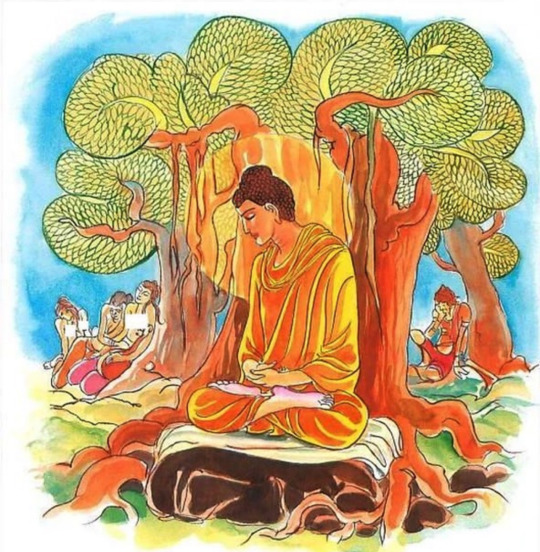
The story of the young weaver - 01
Dhammapada contains 423 verses said by the Buddha in different contexts. Most of the verses have been taken from the discourses of the Buddha. It has been noted that more than two thirds of the verses are taken from the discourses contained in the two collections of the Buddha's discourses known as the Samyutta Nikaya and Anguttara Nikaya. The 423 verses are divided into 26 chapters each with a particular heading. The thirteenth chapter is named "Loka vagga" meaning the chapter on
"the World", which contains 12 verses said by the Buddha.
The back ground story to the 8th verse of the Loka vagga is about a weaver girl who used to practise reflection of death after listening to a sermon from the Buddha.
At one time, the Buddha was staying in Alavi at the Aggalava shrine. The country of Alavi was located between Savatti of Kosala and Rajagaha of Magadha in ancient India. The town of Alavi became well known in the Buddhist literature as Alavaka the Yakkha who is mentioned in the Alava sutta and one of the Buddha's chief male disciples known as Hatthaka Alavaka used to live there.
While staying in the town, the Buddha was delivering a sermon where, the Buddha was describing the impermanence of the five aggregates of clinging that a person is made of and advising the disciples to reflect on impermanence and inevitable death as follows:
My life is uncertain,
My death is certain,
I must certainly die,
My life ends in death,
Life is uncertain,
Death is certain.
The Buddha also stated: "Just like one who is armed with a stick or a spear meets with a poisonous snake, one should always be mindful of death so that one will face one's death mindfully. He will then leave this world to be born at a good destination."
Most of the audience did not heed to the Buddha's advice but there was a sixteen year girl in the audience who happened to be the daughter of a weaver. She understood the Buddha's message on uncertainty of life and the certainty of death and decided to practise reflection on death regularly. She continuously contemplated on what the Buddha taught for three years.
3 notes
·
View notes
Text

item # K23D37
RARE Tao Vessuwan, Roon Thep Satit, Nua Samrit Tay Din Thai, Tok Code U, Wat Suthat, Luang Phu Moon Wat Ban Jan, Pluksek. A cast figurine of Tao Vessuwan, the "ghost buster," known for his ability to vanquish ghosts and evil spirits, a ghost-busting deity, often depicted with a fierce Thai mythical ogre (yaksha or yak) appearance to scare away demons, evil spirits, and ghosts. Tao Vessuwan is also known as Tao Kuvain in Thai or Kubera in Sanskrit, also known as Kuvera, Kuber and Kuberan, the Lord of Wealth, and Kubera is regarded as the regent of the north (Dikpala), and a protector of the world (Lokapala). Made from bronze combined with left-over metal parts from many Batches of metal amulets previously made by Wat Suthat with ancient Thai amulet casting technique that used earth instead of lost wax. Under the base is with a punched mark of a Unalome or Yant U in Thai. The Batch was named “Roon Thep Satit” which means the Devas and their power stay within the amulet. Made by Wat Suthat Thep Wararam, Bangkok in BE 2544 (CE 2001), also blessed / consecrated by Luang Phu Moon of Wat Ban Jan, Si Sa Ket Province.
………………………………………………………
BEST FOR: Tao Vessuwan, the "ghost buster," known for his ability to vanquish ghosts and evil spirits, a ghost-busting deity, scare away demons, evil spirits, and ghosts. Ponggan Poot-pee pee-saat Kunsai Mondam Sa-niat jan-rai Sat Meepit (it helps ward off evil spirit, demon, bad ghost, bad omen, bad spell, curse, accursedness, black magic, misfortune, doom, and poisonous animals). Wealth Fetching, guardian of the treasure. Tao Vessuwan stops your financial loss, and maintains your financial stability. Klawklad Plodpai (it brings safety, and pushes you away from all danger), Kongkraphan (it makes you invulnerable to all weapon attack), Nang Nieow, a rock-hard skin that is completely impervious to damage with bludgeoning or piercing weapons. Maha-ut (it stops gun from shooting at you), Metta Maha Niyom (it helps bring loving, caring, and kindness, and compassion from people all around you to you), and Kaa Kaai Dee (it helps tempt your customers to buy whatever you are selling, and it helps attract new customers and then keep them coming back. And this amulet helps protect you from manipulators, backstabbers, and toxic people.
………………………………………………………
Tao Vessuwan
Tao Vessuwan is one of the Cātummahārājāno, or four Great Kings, each of whom rules over a specific direction. Tao Vessuwan ‘s realm is the northern quadrant of the world, including the land of Uttarakuru. According to some suttas, he takes his name from a region there called Visāṇa; he also has a city there called Ālakamandā which is a byword for wealth. Tao Vessuwan governs the yakkhas – beings with a nature between ‘fairy’ and ‘ogre’.
Tao Vessuwan has the name “Kuvera” from a name he had from a past life as a rich Brahmin mill-owner, who gave all the produce of one of his seven mills to charity, and provided alms to the needy for 20,000 years. He was reborn in the Cātummahārājikā heaven as a result of this good karma.
When the Buddha was born, Tao Vessuwan became his follower, and eventually attained the stage of sotāpanna (Sanskrit: srotaāpanna, one who has only seven more lives before enlightenment). He often brought the Buddha and his followers messages from the gods and other humans, and protected them. He presented to the Buddha the Āṭānāṭā verses, which Buddhists meditating in the forest could use to ward off the attacks of wild yakkhas or other supernatural beings who do not have faith in the Buddha. These verses are an early form of paritta (phan Yak) chanting.
………………………………………………………
*with Certificate of Authenticity issued by DD-PRA
………………………………………………………
DIMENSION: 3.70 cm high / 1.80 cm wide / 1.00 cm thick
………………………………………………………
Item # K23D37
Price: price upon request, pls PM and/or email us [email protected]
100% GENUINE WITH 365 DAYS FULL REFUND WARRANTY
Item location: Hong Kong, SAR
Ships to: Worldwide
Delivery: Estimated 7 days handling time after receipt of cleared payment. Please allow additional time if international delivery is subject to customs processing.
Shipping: FREE Thailandpost International registered mail. International items may be subject to customs processing and additional charges.
Payments: PayPal / Western Union / MoneyGram /maybank2u.com / DBS iBanking / Wechat Pay / Alipay / INSTAREM / PromptPay International / Remitly / PAYNOW
********************************************
0 notes
Text
Os dez episódios mais engraçados do Cânone Páli
O Cânone Páli não é alicerçado apenas em ensinamentos e histórias sérias, vários momentos de humor também podem ser encontrados nas antigas escrituras budistas. Ajahn Sujato compartilha os 10 episódios do Cânone Páli que considera mais engraçados. A lista de episódios divertidos inclui um yakkha a dar uma palmada na careca de Sariputta, o Brahma envergonhado por não ter a sabedoria do Buda, a…

View On WordPress
0 notes
Text
Tao Wessuwan is one of the most important gods and had actually been, and still, acquire many respect in numerous nations as the guardian of all wicked spirits. These spell, belong to the Four Guardian Gods and Tao Wessuwan is their head, was present to Buddha, as the Four Guardian Gods deem that they have to many fans, some are excellent and some are evil and may hurt wondering monks who in the middle of graveyard, deep jungle. Tao Wessuwan is a type of Yaksha, in Hinduism, Tao Wessuwan is known as Kuberan, also the Lord of all the Yaksha, a demonic race of giants. Nowadays, we still can see the 'Suad Parn Yuk' chanting ceremonial and in that ceremony you'll see the image of Tao Wessuwan install on the high place. As Tao Wessuwan had outright advantage to penalize any ghosts and devils. People believe that Tao Wessuwan's power is capable to ruin all inauspicious things, secure individuals from wicked spirits, dark magic and jinx, he also give wealth to people. Impact: Superb to Increase Fortune, Bring Prosperity, Wealthy bring, Powerful protection from black magic and cast other types of wicked forces, ghosts and spirits. Tao Wessuwan is a kind of Yaksha, in Hinduism, Tao Wessuwan is known as Kuberan, also the Lord of all the Yaksha, a demonic race of giants. In Thailand, this same Tao Wessuwan is frequently seen guarding every temples. As in Hindu comparable to Thai Buddhism, it is believe that Tao Wessuwan (even Kuberan) protects the earth concealed treasures and wealth. Hindus believe that worshiping Kuberan bestow them with wealth, abandunce and material convenience. Given that its the same divine being, this amulet can also be used for wealth and product gain. Tao Wessuwan - The demons tormentor! Tao Wessuwan is one of the most essential gods and has actually been, and still, acquire numerous respect in numerous countries as the guardian of all evil spirits. Tao Wessuwan is among the most important gods and had been, and still, acquire many respect in lots of countries as the guardian of all fiends. As we can see that ascetic masters like to make red cabalistic composing plates with his image on it and hand it over the doorway to prevent the locations from evil spirits, this is among the earliest and most comparable preventive technique. Another example is 'Suad Parn Yuk' (A Giant Enchantment Ceremony), such as the spell 'Phra Kata Parn Yuk' or the spell 'Wipudsi'. These spell, belong to the Four Guardian Gods and Tao Wessuwan is their head, existed to Buddha, as the Four Guardian Gods consider that they have to many fans, some are excellent and some are evil and may damage wondering monks who in the middle of graveyard, deep jungle. To prevent those occurrences, they 'd present these spell, 'Phra Kata Parn Yuk', to Buddha. Thao Wessuwun possessed absolute advantage to punish any ghosts and satanic forces. Therefore, individuals think that Thao Wessuwun's power is capable to damage all inauspicious things, safeguard people from fiends, dark magic and jinx, he also approve wealth to the worshippers. Katha, Mantra for Tao Wessuwan Putta Kamo Lapha Puttang Tana Kamo Laphe Tanang Atti Kaye Kaya Yayak Tewanang Piyatang Sutawa, Itipiso Phakawa Yama Rachano Tao Wessuwano Maranang Sukang Arahang Sukato Namo Puttaya, Tao Wessuwano Jatu Maha Racha Chika Yakkha Panta Pat Purito Wessa Phusa Puttang Arahang Putto Tao Wessuwano
0 notes
Text
In today's update, we've added pages for Friulian, Moloko, Romanian and Yakkha resources, and have added resources to the Akan, Bengali, Blackfoot, Ewe, Shughni and Wakhi pages! Go here to start learning!
#linghelp#learn friulian#learn moloko#learn romanian#learn yakkha#learn akan#learn bengali#learn Blackfoot#learn ewe#learn Shughni#learn wakhi
5 notes
·
View notes
Text
Ideas for Hp ship names
Hi guys. So, normally i would be doing yet another mute & block/follow list but, i've noticed that there are a shit ton of yet unnamed ships (both problematic & not) in this fandom so i decided to propose some names for them, startin with the non Problematic ones:
Heat:
Angelotter: the ship between Angelina Johnson and Harry Potter
Reason for the name: its her name and his last name
Jarlene : The ship between James Potter and Marlene McKinnon.
Reason for the name: its their names
Prince's Bones: Severus Snape and Amélia Bones
Reason for the name: it's his mom's last name and her last name... Plus it makes it sound like she belongs to him.
Severlene: Severus Snape and Marlene McKinnon
Reason for the name: it's their names
PaddyPet: Sirius black and Petunia Evans Dursley
Reason for the name: it's both of their nicknames combined
Maregulus:Mary Macdonald and Regulus Black
Reason for the name: it's their names combined
Prince's Pet: Severus Snape and Petunia Evans Dursley
Reson for the name: it's his mom's last name and her nickname.
Femslash:
Chhaang and Gin- the ship between Ginny Weasley and Cho Chang
Reason for the name:
"Chhaang or chhyang (Tibetan: ཆང་, Wylie: chang, Nepali: छ्याङ, Newar: थो:) is a Nepalese and Tibetan alcoholic beverage also popular in parts of the eastern Himalayas, Yakkha, Limbu, Dura, Newar, Sunuwar, Rai, Gurung, Magar, Sherpa, Tamang and Lepcha communities. " (from Wikipedia) & " Gin (/dʒɪn/) is a distilled alcoholic drink that derives its flavour from juniper berries and other botanical ingredients." (from Wikipedia). It also happens that Ginny can be shortened to Gin and Chhaang could also be a misspelling of Cho's last name so it kinda works out.
Gin & Fleur- the ship between Ginny Weasley and Fleur Delacour
Reason for the name: it's a shortened version of Ginny's name and Fleur's name.
Slash:
Drorge- the ship between Draco Malfoy and George Weasley
Dred- the ship between Fred Weasley and Draco Malfoy
Garry-the ship between George Weasley and Harry Potter
Frarry- the ship between George Weasley and Harry Potter
Reverus - the ship between Regulus Black and Severus Snape
Poly:
JoKer Darling - The ship between George Weasley, Fred Weasley Draco Malfoy
Reason for the name : the series of ficts bellow
Chosen JoKer- the ship between George Weasley, Fred Weasley and Harry Potter
Reason for the Name: the same fict series and He is the chosen one
Joker Granger : the ship between George Weasley, Fred Weasley and Hermione Granger
Reason for the name: the same fict series and its her last name
Joker Lee: the ship between George Weasley, Fred Weasley and Lee Jordan
Reason for the name: the same series of ficts and its his name.
Dramionarry: the ship between Draco Malfoy,Harry Potter and Hermione Granger
reason: Its a combination of their ship names
Have more ideas? Leave them in the comments and i will add them to the list. Let's make these ship names official
#harry potter#harry potter fandom#ship names#ideas#proportions#lets make this official#please interact#send ideas#paddypet#prince's pet#angelotter#jarlene#severlene#prince's bones#dramionarry#JoKer Darling#JoKer Granger#Chosen JoKer#JoKer lee
3 notes
·
View notes
Note
This is probably just me, but the house(?) from the s3 intro with the dragonflies looks like a traditional chinese house. Evidence of Anne hurting Marcy in s3?
you know anon, I'm really glad you brought this up, because despite finding myself happy to live in ignorance, this might have a worse implication than your initial suggestion
here's how a Chinese temple looks like and a couple of imperial lions because I think they're neat
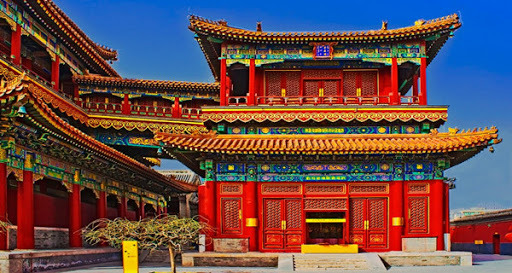

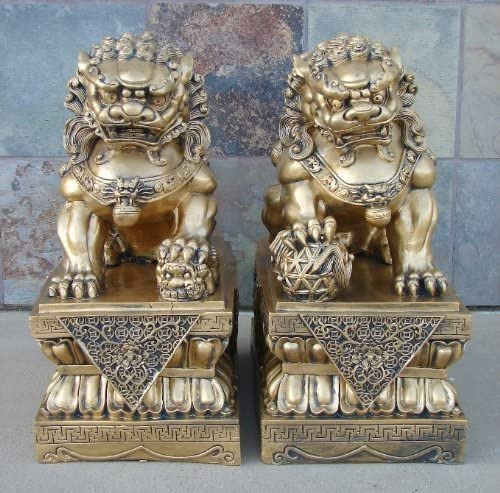
The concept, which originated and became popular in Chinese Buddhism, features a pair of highly stylized lions—often one male with a ball and one female with a cub—which were thought to protect the building from harmful spiritual influences and harmful people that might be a threat.

but what we're looking at is a Thai temple
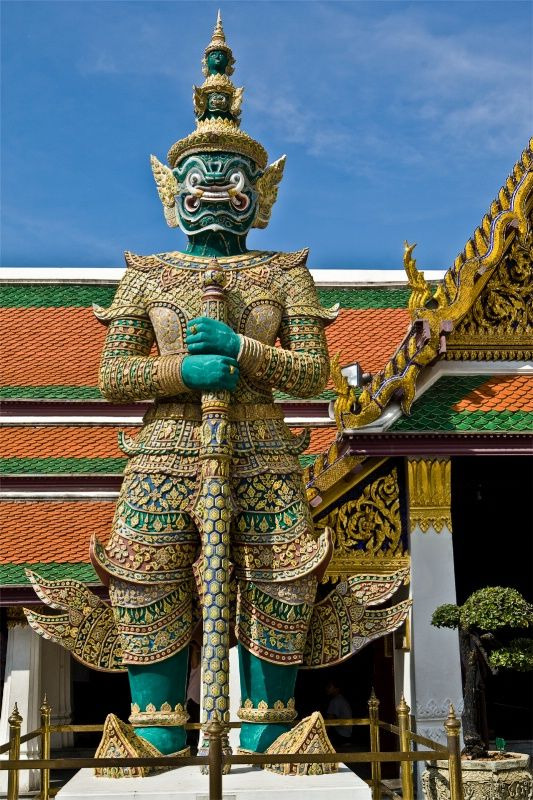
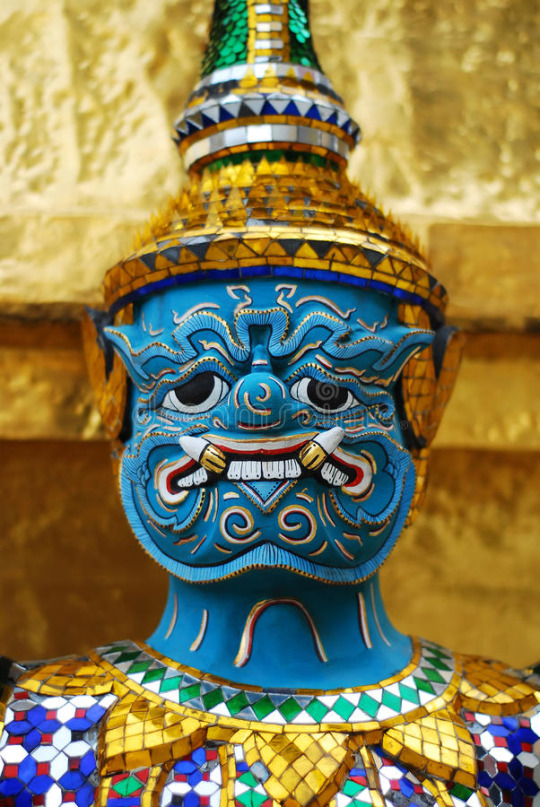
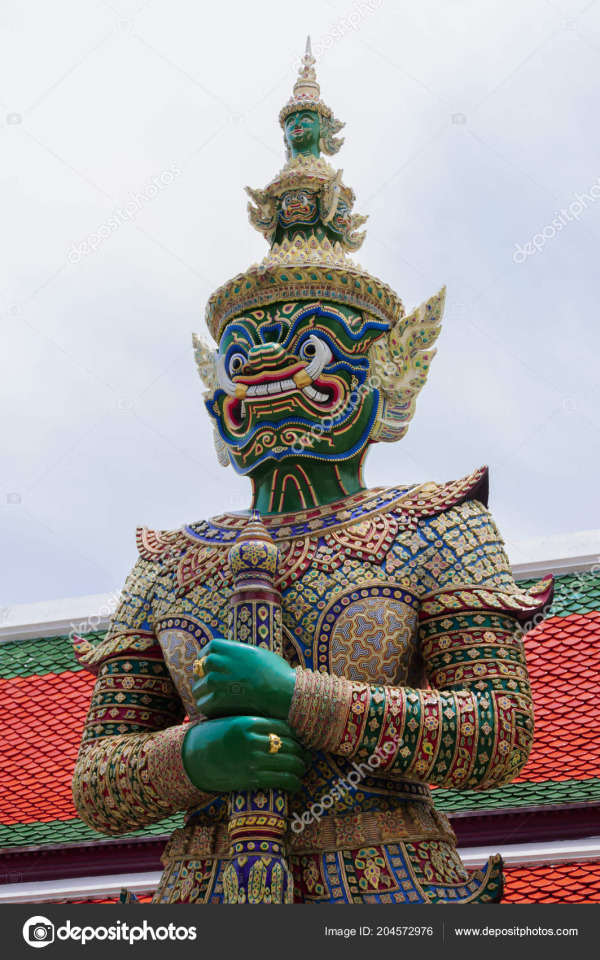
The yakshas (Sanskrit: यक्ष yakṣa; Pali: yakkha) are a broad class of nature-spirits, usually benevolent, but sometimes mischievous or capricious, connected with water, fertility, trees, the forest, treasure and wilderness. They appear in Hindu, Jain and Buddhist texts, as well as ancient and medieval era temples of South Asia and Southeast Asia as guardian deities.
The yakṣa has a dual personality. On the one hand, a yakṣa may be an inoffensive nature-fairy, associated with woods and mountains; but there is also a darker version of the yakṣa, which is a kind of ghost (bhuta) that haunts the wilderness and waylays and devours travellers, similar to the rakṣasas.
Yakshas (Thai: ยักษ์) are an important element in Thai temple art and architecture. They are common as guardians of the gates in Buddhist temples throughout the country since at least the 14th century. They are mostly depicted with a characteristic face, having big round bulging eyes and protruding fangs, as well as a green complexion.
my guess from this observation would be a sort of family gathering of the Boonchuys, maybe the invasion DOES start or for some reason Anne now has the ability to summon swarms of dragonflies, either way, prolly not so good
@arrow-man-tick pspspsp look at this
#amphibia#theory#corruptianne theory#h-anne-ted theory#anne boonchuy#yeah safe answers stuff#theres no theory here just an observation
29 notes
·
View notes
Photo

Hindu Mythology & Deities
- Hindu deities (28)-
Yaksha
Yaksha (Pali 'yakkha', meaning violent evil, victorious demon, and virtue) is a demon god in Hindu mythology. It was later adopted by Buddhism and became a guardian deity of Buddhism. In Hindu mythology, Yaksha is also a generic term for demon gods, along with Asura (in Buddhism, Asura is not a generic term, but a single demon god). The yakshas are a broad class of nature-spirits, usually benevolent, but sometimes mischievous or capricious, connected with water, fertility, trees, the forest, treasure and wilderness. They appear in Hindu, Jain and Buddhist texts, as well as ancient and medieval era temples of South Asia and Southeast Asia as guardian deities. The feminine form of the word is yakṣī or yakshini. In Buddhism, Yasha is one of the eight tribesmen who protect the Buddha-dharma and as a member of the Bishamonten (Kubera) family, he protects the north along with the Rakshasas. There are three types of yashas, Tenyasha (Yaksha of heaven), Jiyasha (Yaksha of earth, and Kokuyasha (Yaksha of air), and all except Jiyasha are said to fly.
インド神話と神様たち
−ヒンドゥー教時代からの神々(28)–
夜叉
夜叉(やしゃ、サンスクリット語のyaksaとパーリ語のyakkhaの音写で暴悪・捷疾鬼・威徳を意味する)は、古代インド神話に登場する鬼神。薬叉(やくしゃ、yaksha)とも称する。のちに仏教に取り入れられ護法善神の一尊となった。 ヒンドゥー神話では、夜叉も阿修羅(仏教では阿修羅は総称ではなく、一つの鬼神)と並んで鬼神の総称である。 夜叉は自然の精霊の総称で、通常は善意に満ちているが、時にはいたずら好きで気まぐれなこともあり、水、豊穣、樹木、森、宝、荒野に関連している。ヒンドゥー教、ジャイナ教、仏教の書物や、南アジアや東南アジアの古代・中世の寺院に守護神として登場する。 女性形では、ヤクシュキ(yakṣī)またはヤクシニ(yakshini)と呼ばれている。 仏教においては、夜叉は仏法を守護する八部衆の一つとして、また毘沙門天(クーベラ)の一族として羅刹と共に北方を守護する。また夜叉には、天夜叉・地夜叉・虚空夜叉の三種があり、地夜叉以外は飛行するという。
#yaksha#demon gods#Hindu mythology#hinduism#buddhism#nature-spirits#nature#art#heaven and earth#yasha
90 notes
·
View notes
Text
The Mythical Birth of The Lion People
The Sinhalese people are native to Sri Lanka, speak Sinhala, are majority Theravada Buddhists, and today make up about 75% of the island's population. They also have a pretty cool origin myth. The Mahavamsa, a Sri Lankan epic from the 400s CE, tells how the Indian prince Vijaya was the grandson of a lion. (No mention of whether Vijaya had a mane or ate really, really raw meat.)
According to the Mahavamsa, Prince Vijaya traveled to the island of Sri Lanka and married Princess Kuveni, a lady of Sri Lanka's previous inhabitants the Yakkhas. Vijaya eventually overcame the Yakkhas, and with his followers took control of Sri Lanka, becoming the first of the Sinhalese people.
The Mahavamsa says the Sinhala never forgot their origins: Sinhala literally means “of lions.” In the Sinhalese tradition the lion is the mythical ancestor of kings and a symbol of royal authority. Because, you know, the first king was a quarter lion and people tend to remember that.
163 notes
·
View notes
Text
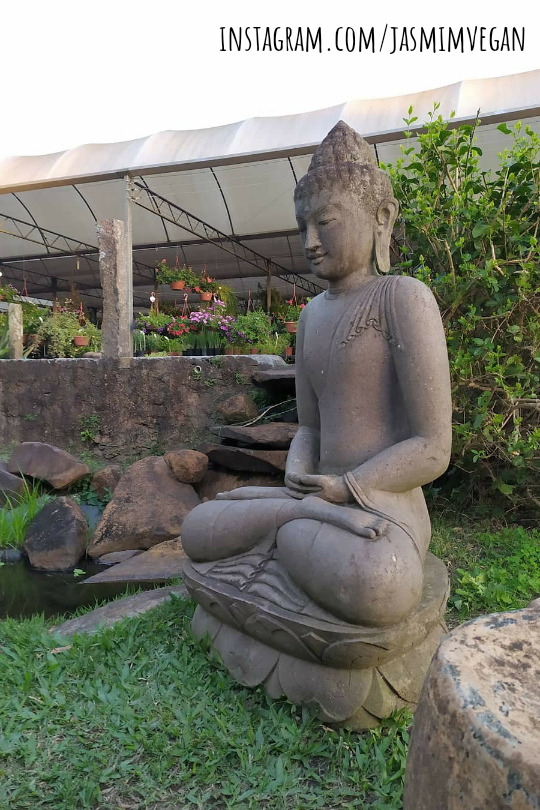
On one occasion the Blessed One was traveling along the road between Ukkattha and Setabya, and Dona the brahman was also traveling along the road between Ukkattha and Setabya. Dona the brahman saw, in the Blessed One's footprints, wheels with 1,000 spokes, together with rims and hubs, complete in all their features. On seeing them, the thought occurred to him, "How amazing! How astounding! These are not the footprints of a human being!"
Then the Blessed One, leaving the road, went to sit at the root of a certain tree — his legs crossed, his body erect, with mindfulness established to the fore. Then Dona, following the Blessed One's footprints, saw him sitting at the root of the tree: confident, inspiring confidence, his senses calmed, his mind calmed, having attained the utmost control & tranquility, tamed, guarded, his senses restrained, a naga. On seeing him, he went to him and said, "Master, are you a deva?
"No, brahman, I am not a deva."
"Are you a gandhabba?"
"No..."
"... a yakkha?"
"No..."
"... a human being?"
"No, brahman, I am not a human being."
"When asked, 'Are you a deva?' you answer, 'No, brahman, I am not a deva.' When asked, 'Are you a gandhabba?' you answer, 'No, brahman, I am not a gandhabba.' When asked, 'Are you a yakkha?' you answer, 'No, brahman, I am not a yakkha.' When asked, 'Are you a human being?' you answer, 'No, brahman, I am not a human being.' Then what sort of being are you?"
"Brahman, the fermentations by which — if they were not abandoned — I would be a deva: Those are abandoned by me, their root destroyed, made like a palmyra stump, deprived of the conditions of development, not destined for future arising. The fermentations by which — if they were not abandoned — I would be a gandhabba... a yakkha... a human being: Those are abandoned by me, their root destroyed, made like a palmyra stump, deprived of the conditions of development, not destined for future arising.
"Just like a red, blue, or white lotus — born in the water, grown in the water, rising up above the water — stands unsmeared by the water, in the same way I — born in the world, grown in the world, having overcome the world — live unsmeared by the world. Remember me, brahman, as 'awakened.'
#buddha#gautama buddha#siddartha#siddhartha gautama#buddhist#budhism#awakaned#awake#awakening#oceanminded
3 notes
·
View notes
Text
Chintang
Linguistic Diversity Challenge — Regional Edition Post # 1 / 12: South and Central Asia
What is the language known as to linguists, and by the speakers themselves? Chintang, Chintán, Chhintange, Chintang Rûng, Teli
Where is the language spoken? Dhankuta District, Eastern Nepal
How many speakers does the language have? about 3500; [...] highly endangered and [is] being supplanted by Bantawa, one of the major Kiranti languages (Rai 1985). In a rapidly increasing number of cases, however, speakers entirely give up their native language or Bantawa and switch to Nepali, the national lingua franca. It is likely that Chintang and Puma will no longer be spoken within one or two generations. (Bickel et al.)
What are some of the languages relatives and is it part of a contact area? Sino-Tibetan >> Himalayish >> Mahakiranti >> Kiranti >> Eastern Kiranti >> Greater Yakkha >> Chintang Relatives are the other Kiranti languages, expecially neighbouring Puma
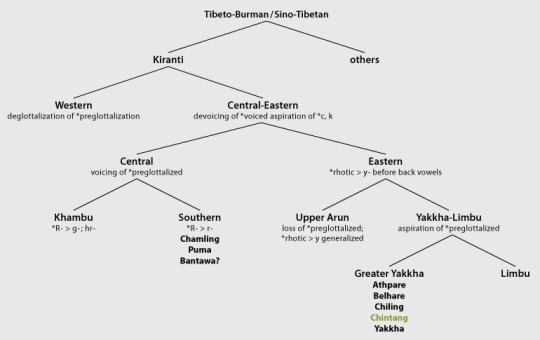
Is the language written? If it is, with what script? If at all, it is written in the Nepali flavor of Devanagari
What is the language like grammatically? The language has a highly intricate verbal morphology with probably over 5000 inflectional forms per verb. Several dozen verbal paradigms have been collected and analysed. We have performed a complete morphological analysis of the affixal system and the stem structure (compound and bipartite stems). The Chintang verb inflects non-periphrastically for tense (past vs. nonpast), aspect (perfective/simple vs. perfect vs. imperfective), polarity (affirmative vs. negative), mood (indicative vs. subjunctive), and agrees in various alignment patterns with the single argument of intransitives (S) and with both the A (actor) and P (primary object) arguments of transitives. The system is supplemented by a rich array of clitics (enclitics and endoclitics) and (both derivational and inflectional) stem compounds. The most surprising discoveries are (a) free prefix ordering (Bickel et al. 2005a), (b) triplication that is demonstrably not based on recursively applied reduplication, and (c) the marking one kind of imperfective aspect as the last morpheme in a suffix string. All three findings violate universal expectations and play a key role in the second year of the project. (Bickel et al.)
What is the language like phonologically? There’s a little Chintang spoken in this video: https://www.youtube.com/watch?v=oXj2U-RvOCM
What made you choose the language? For a rather brief period in 2010/11, I have been part of the Chintang Language Documentation Project, now called CLRP
Resources:
http://www.language-archives.org/language/ctn
http://himalaya.socanth.cam.ac.uk/collections/journals/ebhr/pdf/EBHR_28_05.pdf
http://endangeredlanguages.com/lang/1623/bibliography
https://glottolog.org/resource/languoid/id/chhi1245
https://pure.mpg.de/pubman/faces/ViewItemFullPage.jsp?itemId=item_949474_19 (Dictionary & Grammar) http://www.clrp.uzh.ch/language.html
https://en.wikipedia.org/wiki/Chintang_language
10 notes
·
View notes
Quote
"The fermentations by which I would go to a deva-state, or become a gandhabba in the sky, or go to a yakkha-state & human-state: Those have been destroyed by me, ruined, their stems removed. Like a blue lotus, rising up, unsmeared by water, unsmeared am I by the world, and so, brahman, I am awake."
Buddha (Dona Sutta)
2 notes
·
View notes
Text

Udhauli (उधौली) is a festival of the Kirat communities celebrated to thank mother nature for providing ample harvests every year marking the migration phase downwards towards the low-elevation regions when the winter season arrives.
[src.: https://en.wikipedia.org/wiki/Udhauli]
#gemsartsjewellery#Udhauli#Parva#Kirat#community#hill#harvest#mother#nature#sunuwar#rai#limbu#yakkha#Day#Lazimpat#kathmandu#kathmanduvalley#nepal#diamonds#gold#silver#gems#ring#earring#necklace
1 note
·
View note
Text
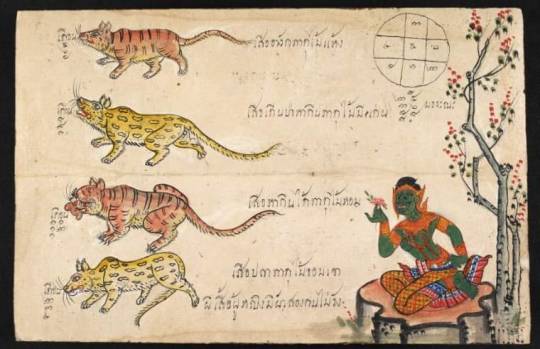
ANNO DELLA TIGRE - 2022
La Thailandia, ha il loro complesso sistema che si allinea con il calendario buddista lunisolare di 354 giorni, che ha date che indicano le fasi lunari e l'ora dell'anno solare. Ed Il 13 aprile segna l'inizio del capodanno thailandese.
Il festival celebra la fine della stagione secca per accogliere la pioggia necessaria per un raccolto di riso di successo.
La festa comunitaria si svolge per un periodo di tre giorni o più, ed è quando l'anno assume l'animale successivo nello zodiaco rotante di 12 animali.
L'etimologia di Songkran deriva dalla parola sanscrita 'sankranti', ovvero il passaggio del sole da una parte all'altra dello zodiaco, ed è simbolica di trasformazione e cambiamento.
La tradizione potrebbe aver avuto origine dalla festa del raccolto indù Makar Sankranti, che accoglie l'inizio della primavera con coloratissimi aquiloni svettanti.
l'usanza thailandese, serve solo una piccola ciotola di acqua profumata, questo e sufficiente per lavare via i problemi dell'anno precedente e ricominciare da capo.
Questa festa è anche il momento di, onorare i loro anziani, fare offerte di cibo ai monaci, accendere petardi per spaventare gli spiriti maligni e fare il bagno ritualmente alle immagini del Buddha domestico.
(The Tiger)
Avatar: Yakkhini (un demone femminile)
Elemento: legno
Habitat dello spirito custode: albero di neem
Caratteristiche: Marte è la bocca (loquace), Giove è il cuore (scarse capacità di apprendimento), il sole è il lombo (ama i piaceri sensuali), Mercurio e Venere sono le mani (abili e scaltre), Saturno e la luna sono i piedi (volontà viaggia molto e sii fortunato).
Le pagine sono riccamente illustrate con quattro immagini di ciascuno dei 12 animali dello zodiaco, combinate con avatar maschili e femminili alternati, l'aspetto materiale o incarnazione di una divinità sulla terra e una pianta simbolica in cui il khwan, anime multiple o vita forze, risiede.
Avatar: Yakkhini (un demone femminile)
Yakkha: Una classe di esseri non umani generalmente descritti come non umani. Sono menzionati con Deva, Rakkhasa, Dānava, Gandhabba, Kinnara e Mahoraga (Naga). A volte gli Yakkha sono stati degradati allo stato di orchi cannibali dagli occhi rossi.
Le femmine Yakkha (Yakkhinī) sono, in questi casi, più paurose e di mente più malvagia del maschio. Mangiano carne e sangue e divorano anche gli uomini.
Normalmente l'atteggiamento degli Yakkha verso l'uomo è di benevolenza. Sono interessati al benessere spirituale degli esseri umani con i quali entrano in contatto e assomigliano in qualche modo ai geni tutelari. Tuttavia, il re Yakkha, Vessavaṇa, è rappresentato mentre dice al Buddha che, per la maggior parte, gli Yakkha non credono né nel Buddha né nei suoi insegnamenti, che impongono ai suoi seguaci di astenersi da vari mali e sono quindi sgradevoli ad alcuni dei Yakkha. Tali Yakkha sono disposti a molestare i seguaci del Buddha nei loro ritrovi nei boschi.
Albero di neem - Albero del paradiso
Sarbaroganibarini ovvero che cura tutti i mali. Cosi viene descritto l'albero di Neem, dall'Ayurveda, la medicina tradizionale indiana risalente ad alcuni millenni fa.
(Storia) Neem è una parola Hindi che deriva dal Sanscrito Nimba. È solo una delle tante parole con cui viene indicato quest'albero. Ad esempio, nella tradizione araba veniva chiamato con il nome di Shajar-e-Mubarak cioè l'albero benedetto. Nella mitologia indiana esistono diverse versioni sull'origine sacra del neem; un antico testo appartenente ai Veda descrive come Garuda, un Dio-uccello, lasciò cadere dal cielo alcune gocce di ambrosia, elisir dell'immortalità, sull'albero di neem. Un'altra antica tradizione ritiene che sia stato Indra, Dio dei fulmini, della pioggia e delle tempeste, a bagnare la Terra con Amrita dando origine al neem. Altri miti mettono in relazione Dhanvantari, conosciuto come il Dio della medicina e l'albero di neem. Le prime testimonianze sull'utilizzo terapeutico del neem risalgono al 4500 a.C., in una grotta in Pakistan sono state rinvenute delle foglie di neem insieme ad altri manufatti appartenenti alla medicina ayurvedica. La farmacopea tradizionale indiana sin dalle sue origini inserisce il neem in numerose soluzioni, infatti era considerato come un rimedio universale. L'Ayurveda è l'antica medicina tradizionale e ad oggi è ben integrata nel sistema sanitario indiano e si trovano facilmente in commercio un consistente numero di preparati ayurvedici contenenti neem, come il jatyadi taila un olio contro l'ulcera, dhattur tailam un olio per dermatiti e dolori muscolari oppure il palit nasya un rimedio contro la calvizie....
0 notes